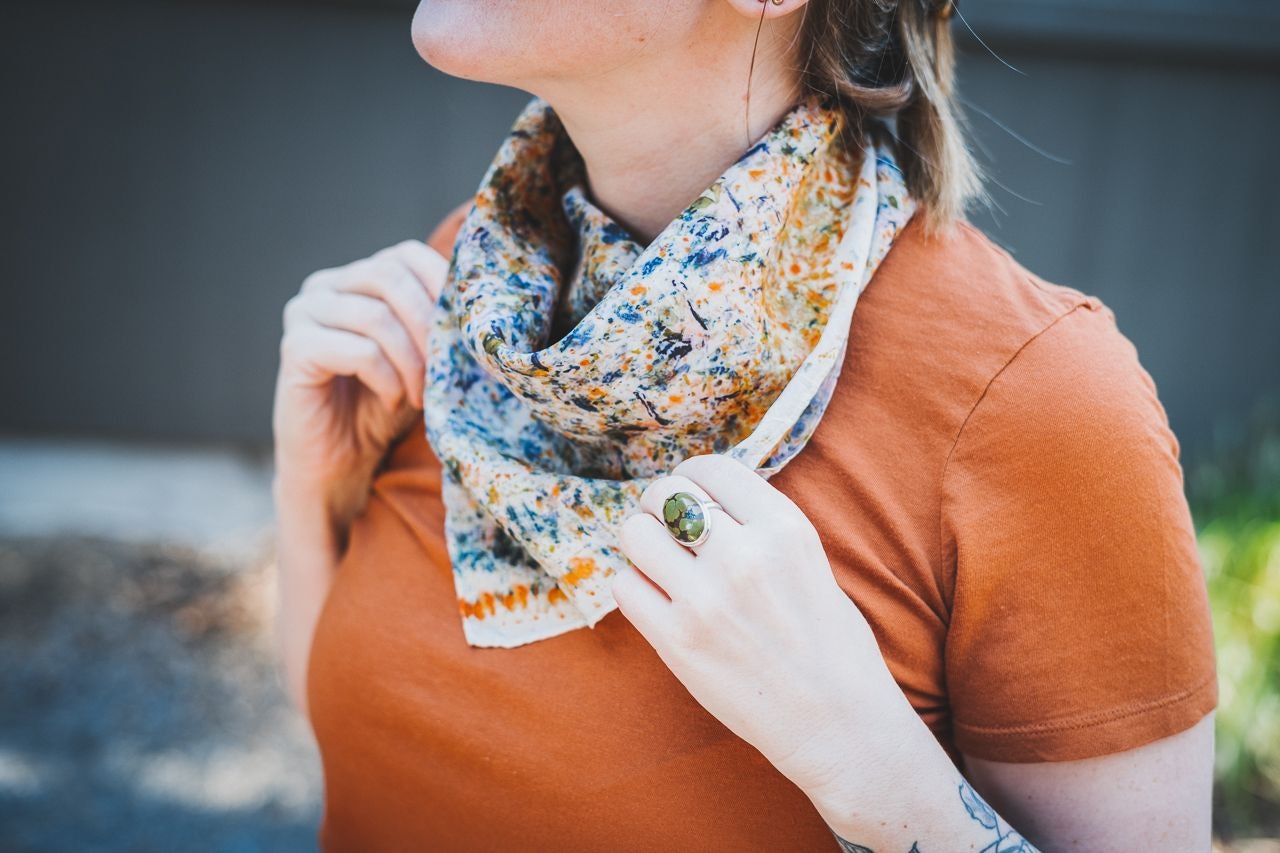
If you've been reading this blog for a little while, you know about my passion for natural dyeing.
I was first introduced to it by my friend, artist Kristin Morrison-Marks back in early 2015. She taught a screen printing with natural inks class at some friends' studio and my life hasn't been the same ever since.
I later experimented with indigo and shibori and even dyed pieces for cult brand Elizabeth Suzann.
While I still dream about planting my own dye garden, I keep a constant supply of avocado pits and onion skins in my freezer.
While some projects I like to do alone, others I know I will enjoy even more by making them with someone else. And I know I might learn something new along the way.
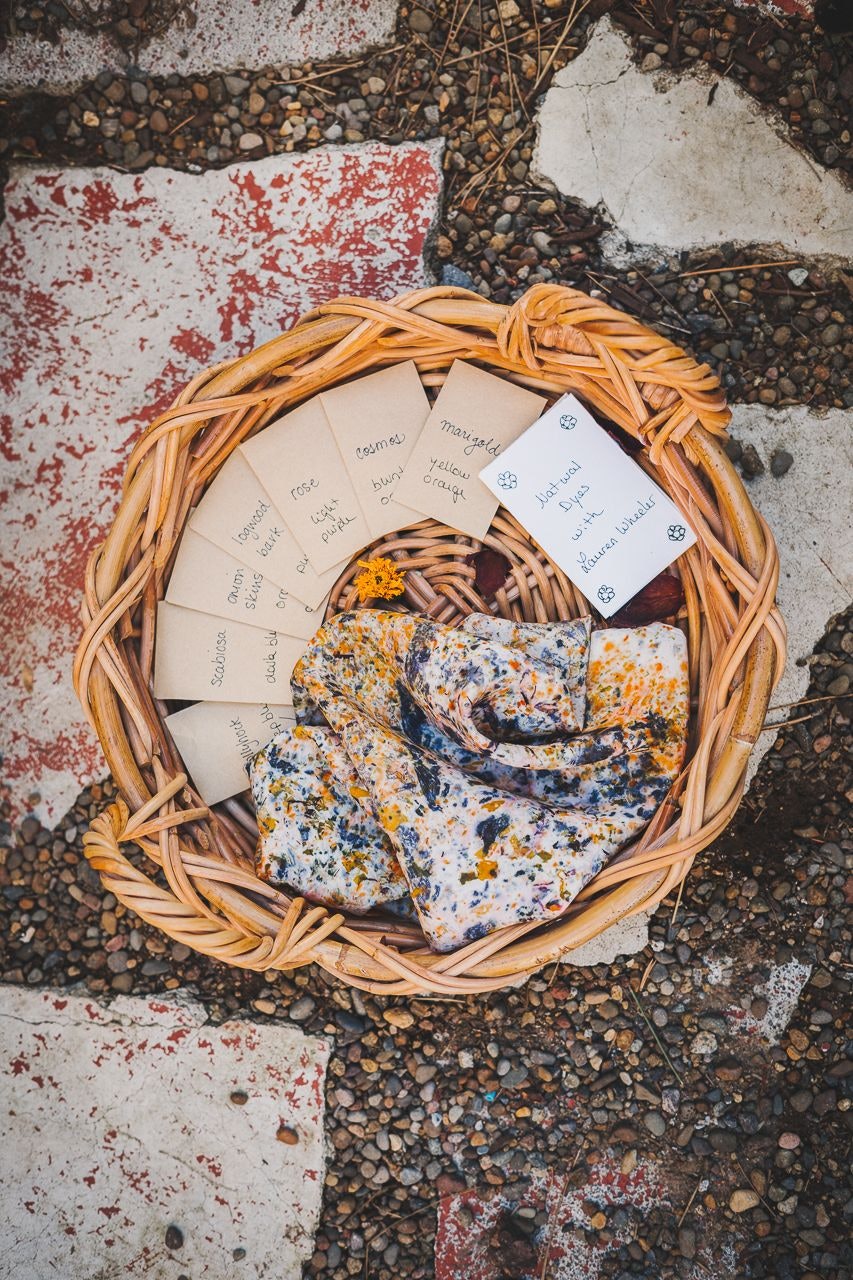
I had been following local dyer Lauren Wheeler of Vive Textiles for a little bit and put her workshop on my birthday wishlist. So last week, after a long day of work, I attended a natural dyeing class at one of my favorite stores in Bend, The Peoples Apothecary.
Lauren says: "I discovered the concept of natural dyeing and eco printing just last year. Despite being a little late to the game, it has absolutely captivated me. It generates a constant mindfulness of my surroundings and an appreciation for nature (and science) on a deeper and slower level. I enjoy incorporating local PNW foliage in honor of our beautiful town. Each piece is wearable art; it tells an individual story of a plant’s journey through life. By the process of botanical printing and dyeing, it then lives forever on beautifully soft textiles. Its story becomes permanent. Revived."
Her naturally dyed and printed scarves and pillowcases are works of art.

How to Natural Bundle Dye a Silk Scarf
Material
- Silk scarf
- Mordant
- Flowers and other natural materials
- Elastic bands
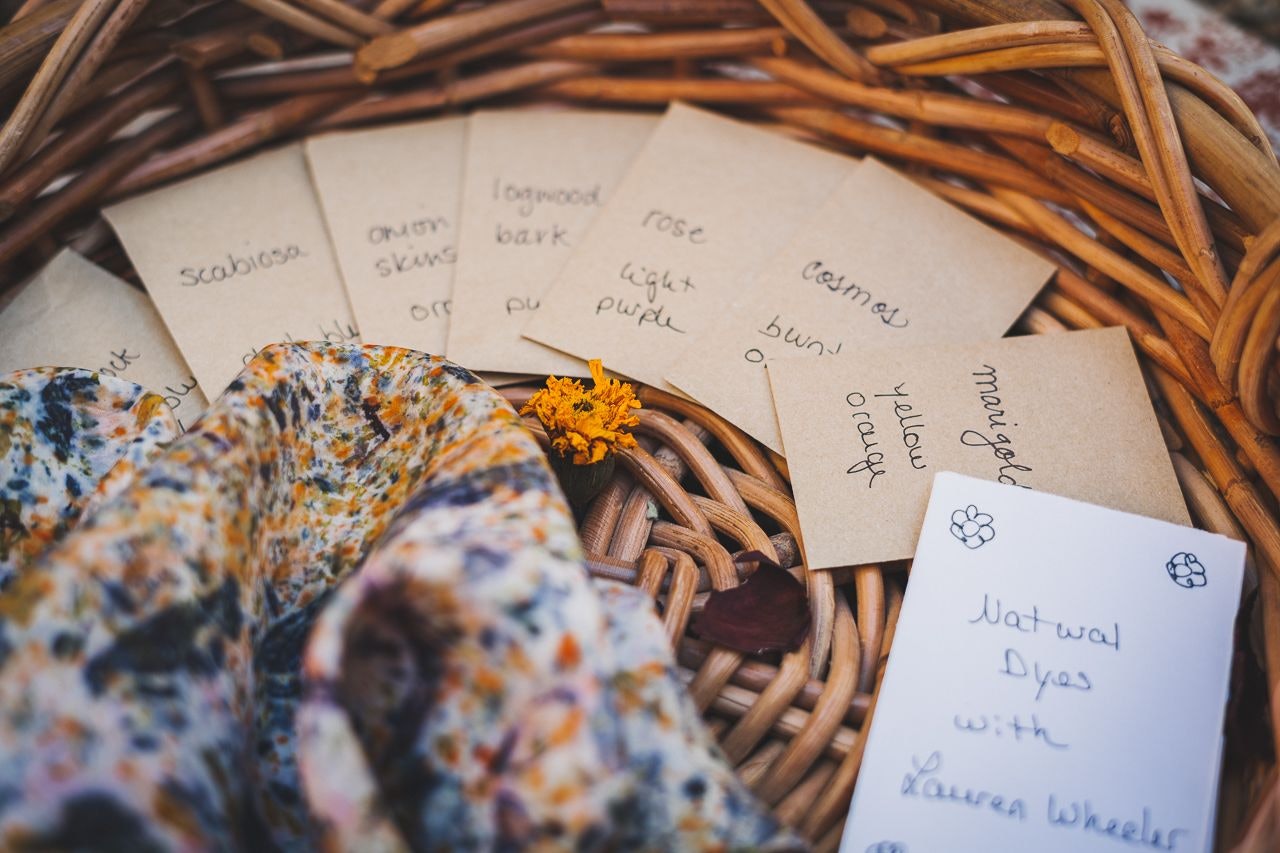
Instructions
Lauren came up with a fun acronym that sums up all the steps you need to follow to dye your scarf: SMASH!
I illustrated them in a zine format that I might show you in a future article.
You can see how I dyed my scarf in these Instagram stories.
- Scour - Wash your fabric at a high temperature to remove anything that could prevent you from getting a uniform dye.
- Mordant - Soak your fabric in a solution that will allow the fabric to absorb and maintain the dye.
- Apply - Apply your dye material on the fabric, roll the fabric onto itself, bundle it and tighten it with elastics.
- Steam - Steam the bundle for about 10 minutes.
- Hang - Remove the dye material and hang the fabric to dry.
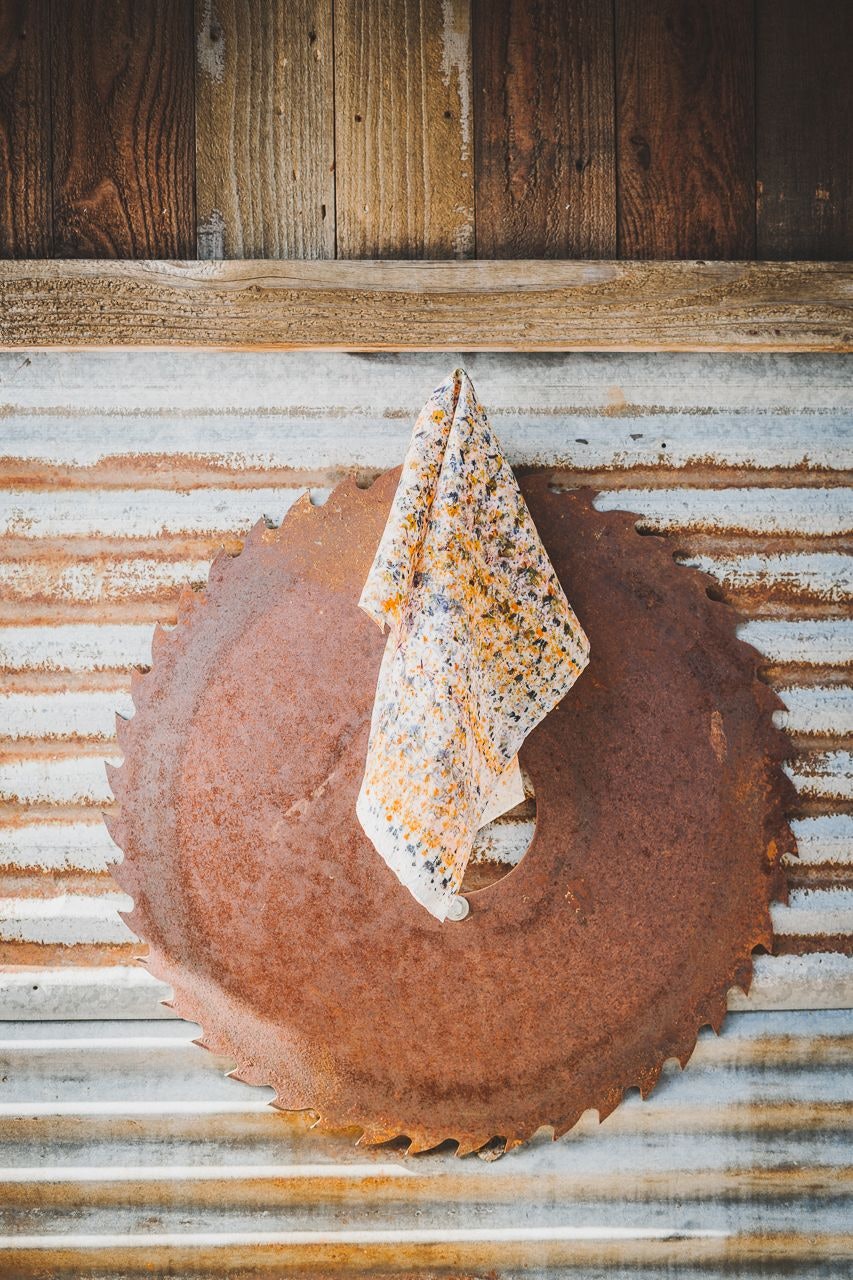
Inspiration
I can never read too many books about natural dyeing. Here are my favorites.
I also draw a lot of inspiration from the Instagram accounts of natural dyers Rebecca Desnos, Maggie Pate, and Liz Spencer.
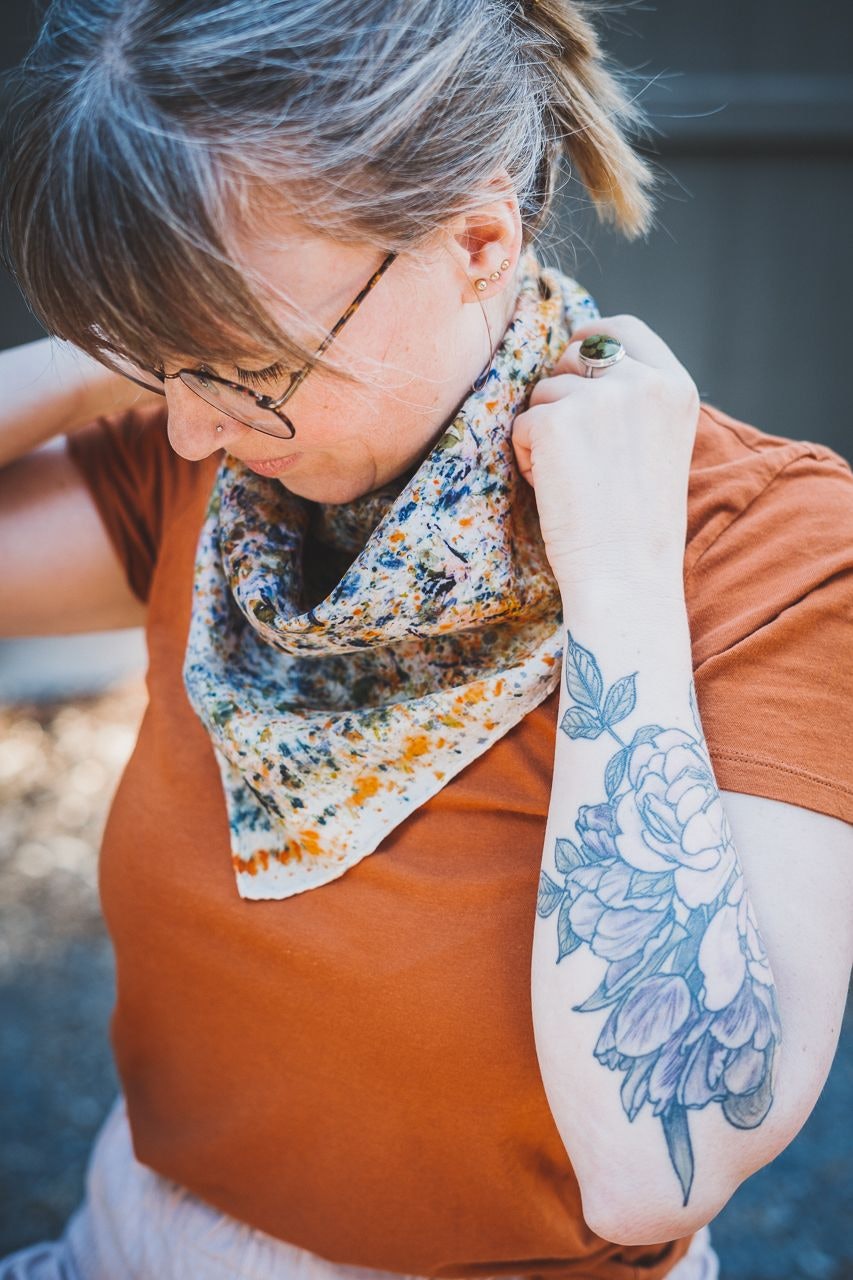
Have you ever experimented with natural dyeing? Where do you draw your inspiration from?








